News
Your Tesla will become a humanless chauffeur, summoned via app
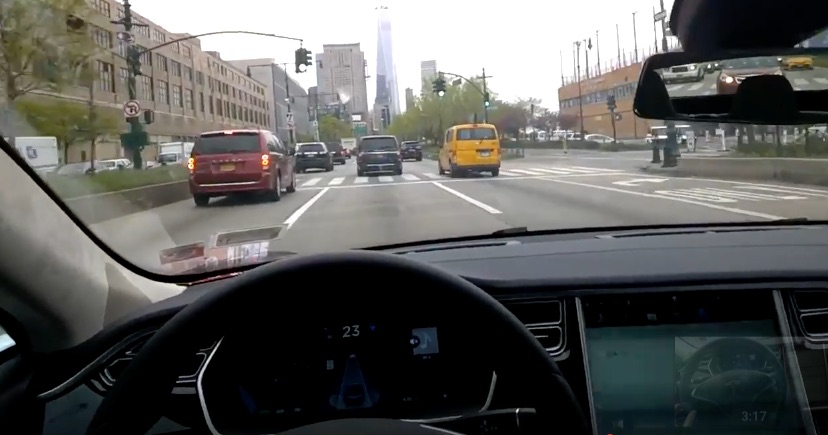
Your Tesla eases its way through the choked streets of Los Angeles and climbs the Sierra Nevada. It glitters with the lights of Las Vegas before continuing over to Yellowstone National Park, where the geysers blow and the buffalo stare from roadsides. Meandering through the Badlands and by Mount Rushmore, it pushes upward in elevation into the Rockies and then down to Denver. After the Tesla powers past the Midwest’s cornfields, it propels its way through Chicago’s multiple highway lanes, wedged between tractor trailers. In the final leg of the trip, the Tesla dips and zips through Pennsylvania’s rolling hills and maneuvers through the congested streets of Times Square, parking itself.
These Northern route stats: 3,241 miles in 54 hours, and your Tesla did all the driving for you. It was capable of seeing through heavy rain, fog, dust, and two cars ahead.
That’s the vision, or Tesla Vision, rather, of the not-so-distant future as announced by Tesla CEO Elon Musk during a press conference call on Wednesday, October 19. Outlining a future of self-driving cars, Musk set a goal for Tesla to make a fully autonomous road trip from Los Angeles to New York by the end of 2017. The trip would occur “without the need for a single touch” from the driver, including recharging the car’s battery. Owners would be able to Summon their vehicle, through a press of a button on an app, and the car would drive itself to wherever they are and pick them up – even if it’s across the country. The vehicle would charge on its own along the way without human intervention using something similar to the Snakebot that Tesla revealed last year.
“Our goal— I feel pretty good about this goal — we’ll be able to do a demonstration drive of full autonomy all the way from LA to New York. So basically from a home in LA to, let’s say. dropping you off in Times Square, in New York, having the car park itself by next year. Without the need for a single touch, including the charger.”, says Musk.
When you want your car to return, tap Summon on your phone. It will eventually find you even if you are on the other side of the country
— Elon Musk (@elonmusk) October 20, 2016
This Level 5 “full self-driving or driverless capacity” will now be available on the 2,000 cars a week that Tesla is currently manufacturing. That means the Tesla Model S and Model X vehicles in production as well as the upcoming Model 3 will have what Musk terms “Hardware 2,” which allows for full self-driving capability at “a safety level substantially greater than that of a human driver,” according to Musk. The hardware includes:
- 8 surround cameras which provide 360 degree visibility around the car at up to 250 meters of range;
- 12 updated ultrasonic sensors that allow detection of both hard and soft objects at nearly twice the distance of the prior system; and,
- a forward-facing radar with enhanced processing that provides additional data on a redundant wavelength.
The system, which has been more than a year in testing, will see continual software updates as the system learns through data collected from ‘Shadow Mode’ and self-driving algorithms are refined. Musk said that it would be some time before Tesla’s software would advance to meet capabilities of Hardware 2, so it will be disabled until it “reaches parity following full validation with Hardware 1, probably in December.” Updates are likely to occur every 2-3 months thereafter. Nonetheless, and in lieu of required regulatory approval, Musk claims that the safety level of this autonomous driving will be at least twice that of a human, or better.
Tesla’s current Autopilot system has been replaced with a newer generation ‘Enhanced Autopilot’ that will leverage the new suite of sensors to provide more precise lane keeping, lane changes without driver input, the ability to exit freeways, and an overall smoother and safer experience. Enhanced Autopilot and the Fully Self-Driving Capability, autonomous mode, is being made available through Tesla’s Model S and Model X Design Studio as optional upgrades.

News
Tesla’s NACS adapters hinted in code for future Apple Maps update
Apple Maps will soon warn EV owners when they need an adapter for routes that include Superchargers.
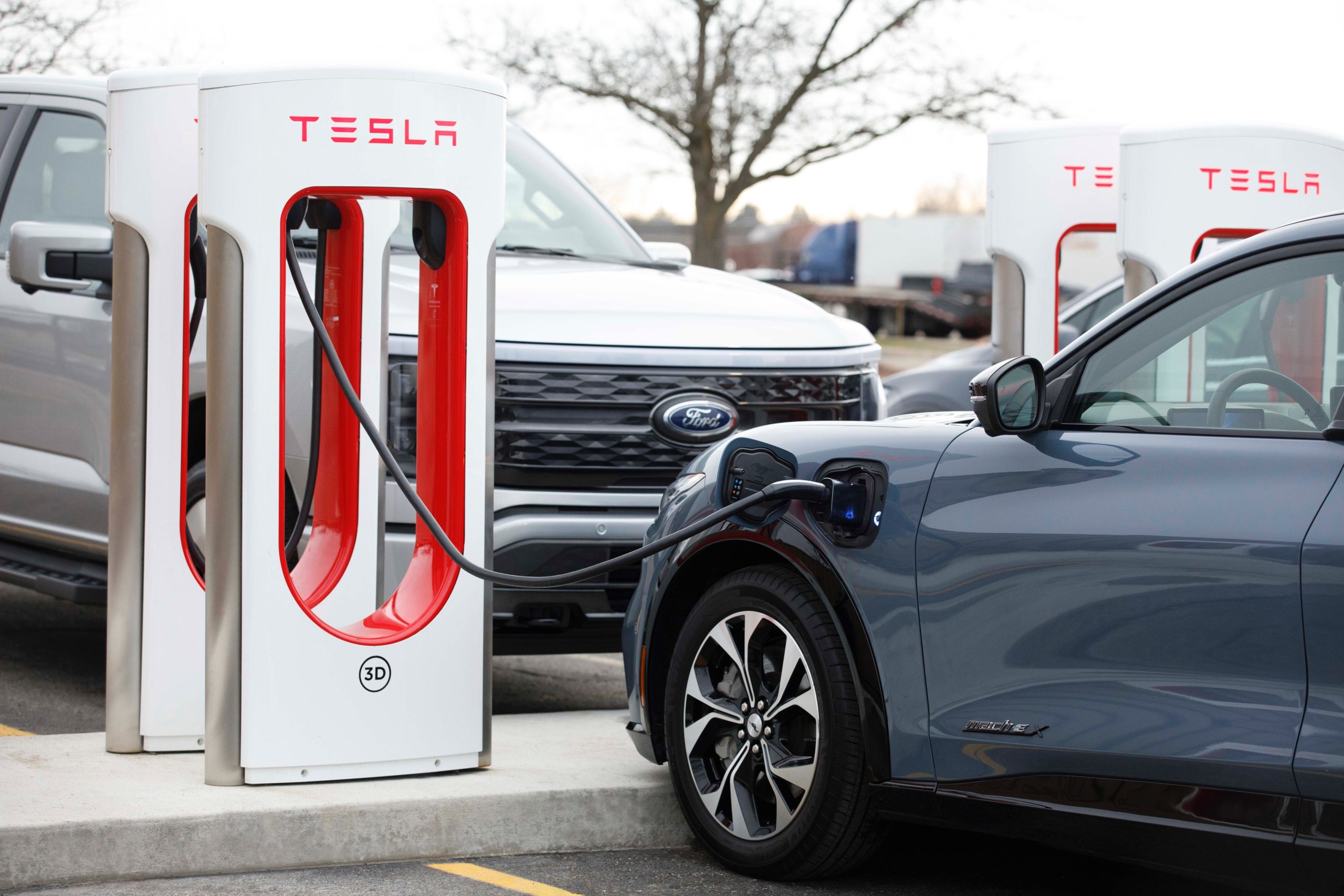
Navigation warnings referring to adapters for Tesla’s North America Charging Standard (NACS) are set to be added to Apple Maps in a future update, as spotted by one code sleuth this week.
On Monday, X user and code sleuth Aaronp613 shared code from a future iOS 18.4 beta update that includes Maps references to NACS charging adapters, warning drivers when such an adapter is required on certain navigation routes. The code looks like it includes a voice alert and heading message for the Apple Maps navigation system, which can be expected to be added in a future update.
The latest iOS version available at this time for iPhone and iPad is 18.3.1, according to Apple’s website. The anticipated update is also expected to arrive amidst increased cross-platform integration for vehicle owners, as many companies attempt to make it easier for electric vehicle (EV) owners to stay charged and keep tabs on their vehicles.
🚨 Apple looks to be prepping for the takeover of Tesla’s NACS charging connector. It will tell you if it is NACS-enabled or requires an adapter
This appears to be a feature that will be added to a future iOS version https://t.co/afD7qqsbge
— TESLARATI (@Teslarati) March 3, 2025
READ MORE ON TESLA SUPPORT FOR APPLE DEVICES: First look at Tesla’s app for the Apple Watch
Many Tesla and other-brand EV owners use an iPhone or other Apple devices, so integration between these and a person’s vehicles are becoming increasingly important. The automaker also launched an Apple Watch app as part of its holiday update in December, letting owners control their vehicles even from the wearable device.
Tesla has also been rolling out widespread access to its Supercharger network to other EV brands over the last several months, and the code is just the latest hint at updates focused on making it easier for consumers to use its charging stations. As more and more brands gain access, drivers of non-Tesla vehicles will also be using the Supercharger network in increasing volumes, making such alerts especially important for making sure new owners are informed and aware of what they might encounter on their navigation routes.
Companies across the industry announced partnerships to adopt Tesla’s NACS charging standard in future vehicle models throughout much of 2023, alongside plans to offer adapters to owners of existing vehicles with the CCS hardware.
Elon Musk
Tesla gaining with Republicans as it loses traction with Democrats: Stifel
Stifel’s Think Tank Group data has shown that Democrats’ net favorability of Tesla fell to -15% from 7% since February 2024, while Republicans’ rose to 27% from 11%.
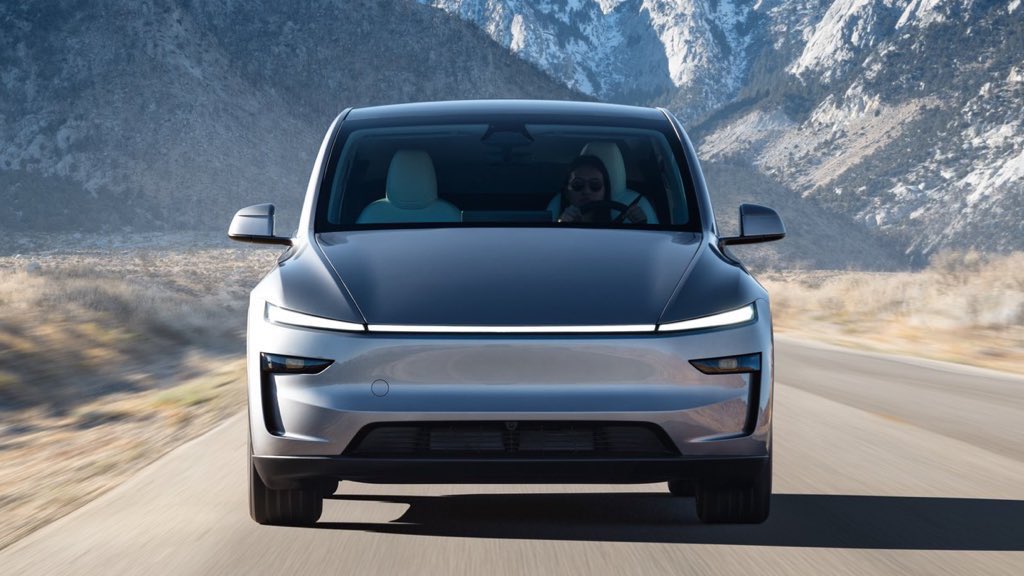
Elon Musk’s vocal support for U.S. President Donald Trump has driven a partisan divide in Tesla’s (NASDAQ:TSLA) appeal, with Democrats souring on the brand and Republicans warming to it, as per Stifel analysts led by Stephen Gengaro.
The Stifel analysts’ findings were outlined in a report from Investing.com.
Musk’s Trump support:
Elon Musk openly supported Donald Trump last year following the then-candidate’s first assassination attempt. Since Trump took power, Musk has become more involved in politics, with the CEO now leading the Department of Government Efficiency (DOGE).
Musk’s involvement in conservative politics has resulted in a wave of protests against the CEO. A number of Tesla stores have also been vandalized in recent weeks, and some have been the location of anti-Musk protests.
🚨 Tesla "losing traction" with Democrats but gaining with Republicans, Stifel says
Elon Musk’s actions are impacting how some carbuyers are approaching Tesla, according to the Stifel analysts led by Stephen Gengaro.
"There is a clear negative shift from Democrats, while… pic.twitter.com/7CwjVHGrlp— Herbert Ong (@herbertong) March 3, 2025
What Stifel analysts say:
Stifel’s Think Tank Group data has shown that Democrats’ net favorability of Tesla fell to -15% from 7% since February 2024, while Republicans’ rose to 27% from 11%. Democrats’ net purchase consideration for Tesla vehicles also dropped to -42% from -31% since Musk endorsed Trump in August, while Republicans’ improved to -13% from -26% in the same period, per Stifel.
“There is a clear negative shift from Democrats, while Republicans willingness to buy a Tesla is rising… This backlash has surfaced anecdotally and on social media (people placing bumper stickers on their Tesla’s claiming they love the car, but not Elon, and other variations),” the analyst noted.
Potential Headwinds:
Genaro noted that Republican interest in Tesla might offset some Democratic losses for the electric vehicle maker. However, there might be “some near-term headwinds” from Musk’s role, China’s fierce competition, and the company’s transition from the Model Y classic to the new Model Y. A 45.2% year-on-year sales drop in the EU in January—against a 37% rise in regional EV sales—was also dubbed by the analysts as a “worrisome trend,” as it could potentially be “highlighting a shift in consumer preference away from Tesla toward other manufacturers.”
News
Anti Elon Musk protester attacks Polestar after mistaking it for a Tesla
Witnesses noted that prior to the attack, the man was waving a homemade sign slamming Elon Musk and Tesla.
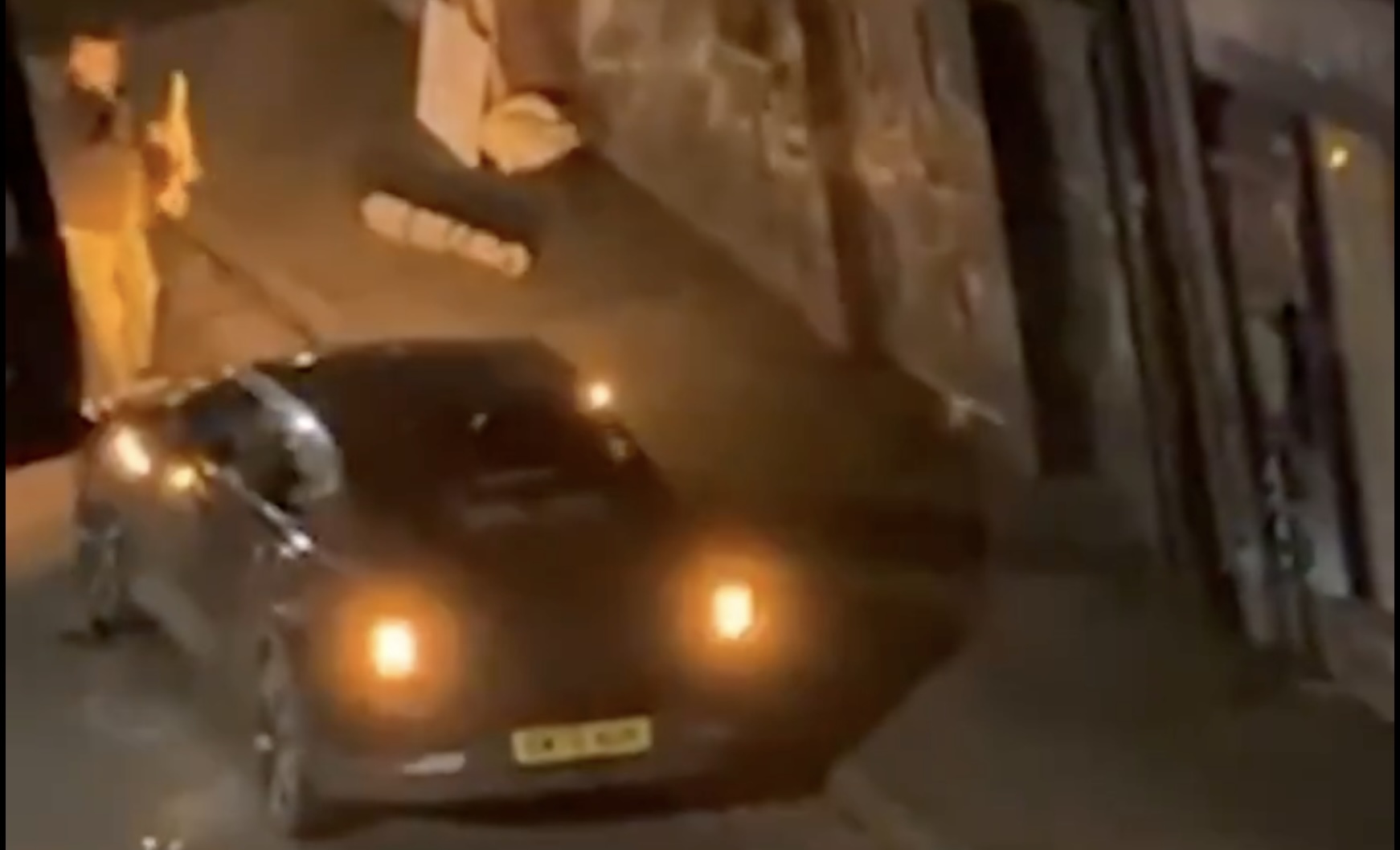
A man described as being in his 40s decided to express his frustration against Elon Musk by attacking one of the CEO’s all-electric vehicles in central Bristol, England.
Unfortunately, the man did not seem to be too familiar with Teslas at all, or even how they looked like. As a result, he ended up attacking and damaging a Polestar electric vehicle instead.
The attack:
As could be seen in videos taken of the attack, the man, seemingly fueled by anti-Elon Musk fury, grabbed a “big pole” and smashed the unfortunate Polestar. The man damaged the Polestar quite a bit, breaking several of the electric car’s windows and seemingly damaging some body panels.
Witnesses noted that prior to the attack, the man was waving a homemade sign slamming Elon Musk and Tesla, as noted in a Daily Mail report.
Man smashes e-car to protest Elon Musk, but mistakes Volvo for Tesla. pic.twitter.com/DNq6UmPS2j— Daily Mail Online (@MailOnline) February 27, 2025
Police catch protester, then releases him:
Avon and Somerset Police arrested the pole-wielding man on suspicion of criminal damage, arson, and carrying an offensive weapon in public, though they later released him under investigation.
A local, who initially mistook the racket for fireworks, told authorities that the protester “wasn’t trying to do a runner.” “I thought, it must be some kind of protest,” the local noted.
“I was shocked. When you’re trying to go to sleep on a Monday evening, the last thing you expect to hear is a bloke smashing up a car,” the local added.
Indeed, it was a protest. A protest against the wrong car.
Sign’s Musk Rant:
The protester’s sign is quite rambling, reading: “Eleon Musk you have to pay for all that demolition and seven a trillion dollars for foundation Wielka Orkiestra Witecznej Pomocy,” referring to a Polish charity, The Great Orchestra of Christmas Charity, for no clear reason.
-
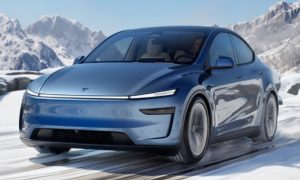
 News2 days ago
News2 days agoTesla’s lead designer weighs in on plans for these two Model Y colors
-
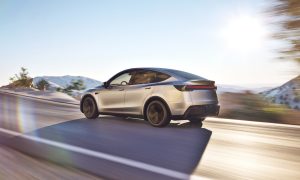
 Elon Musk12 hours ago
Elon Musk12 hours agoTesla mulls adding a new feature to fight off vandals as anti-Musk protests increase
-
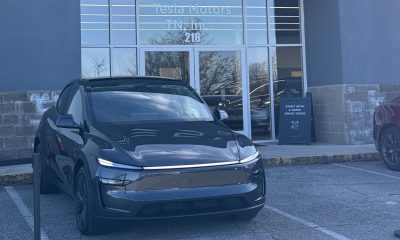
 News15 hours ago
News15 hours agoTesla starts Model Y ‘Launch Edition’ deliveries in the U.S.
-
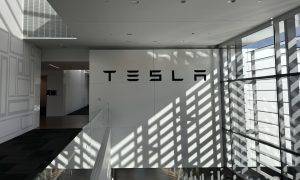
 News1 day ago
News1 day agoTesla design head reflects on over 16 years with the company
-
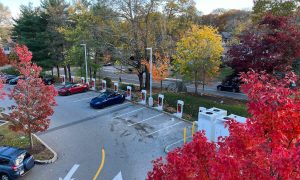
 News3 days ago
News3 days agoTesla launches 100+ Supercharger partnership with this fast food chain
-
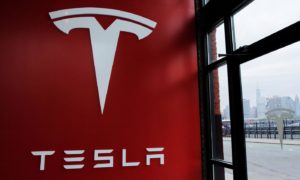
 Elon Musk2 days ago
Elon Musk2 days agoAnti-Musk protests at Tesla store in New York lead to arrests
-

 News2 weeks ago
News2 weeks agoTesla made the new Model Y cabin so quiet that now it’s looking for a fix
-
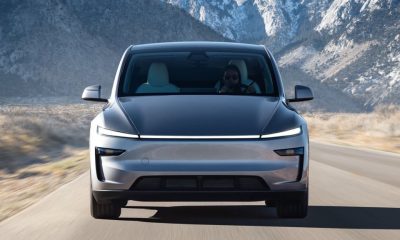
 Elon Musk12 hours ago
Elon Musk12 hours agoTesla gaining with Republicans as it loses traction with Democrats: Stifel




